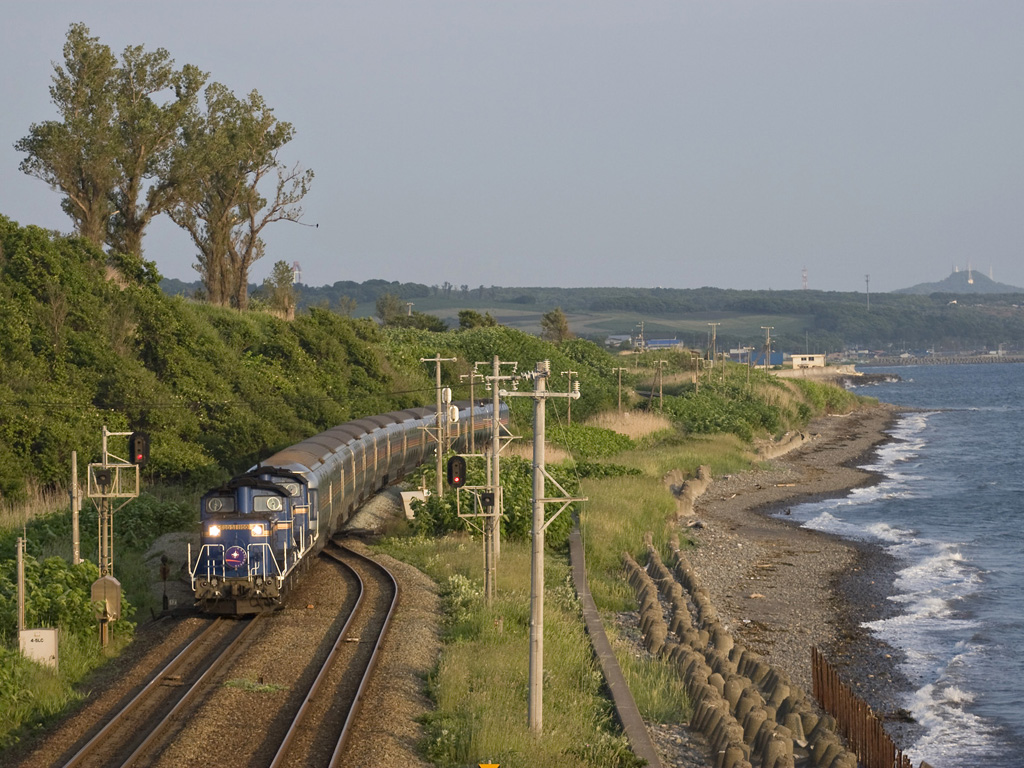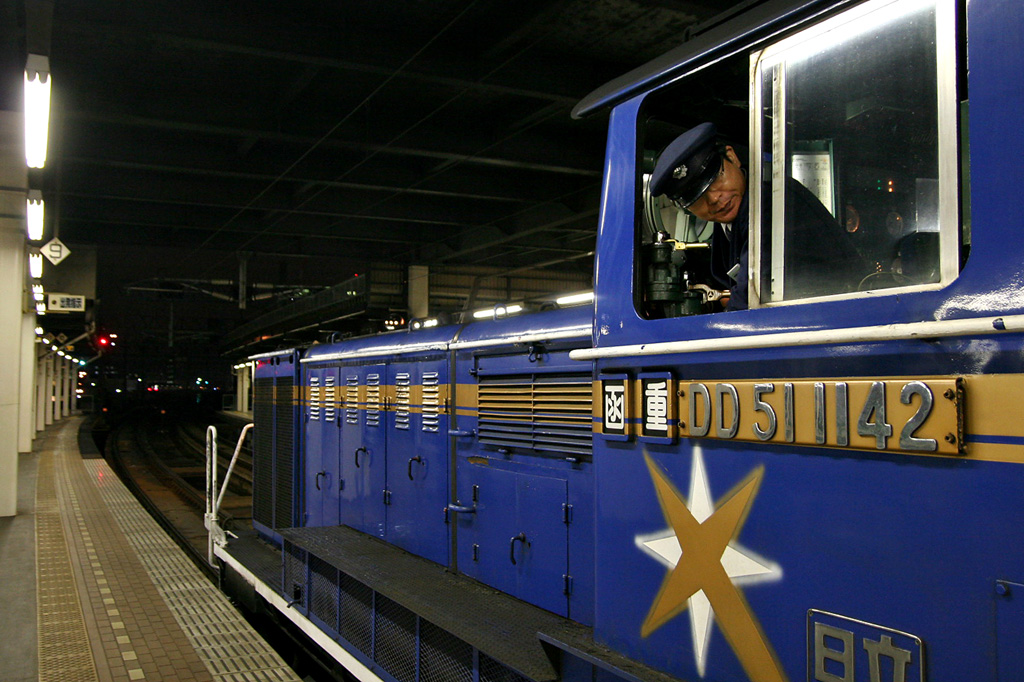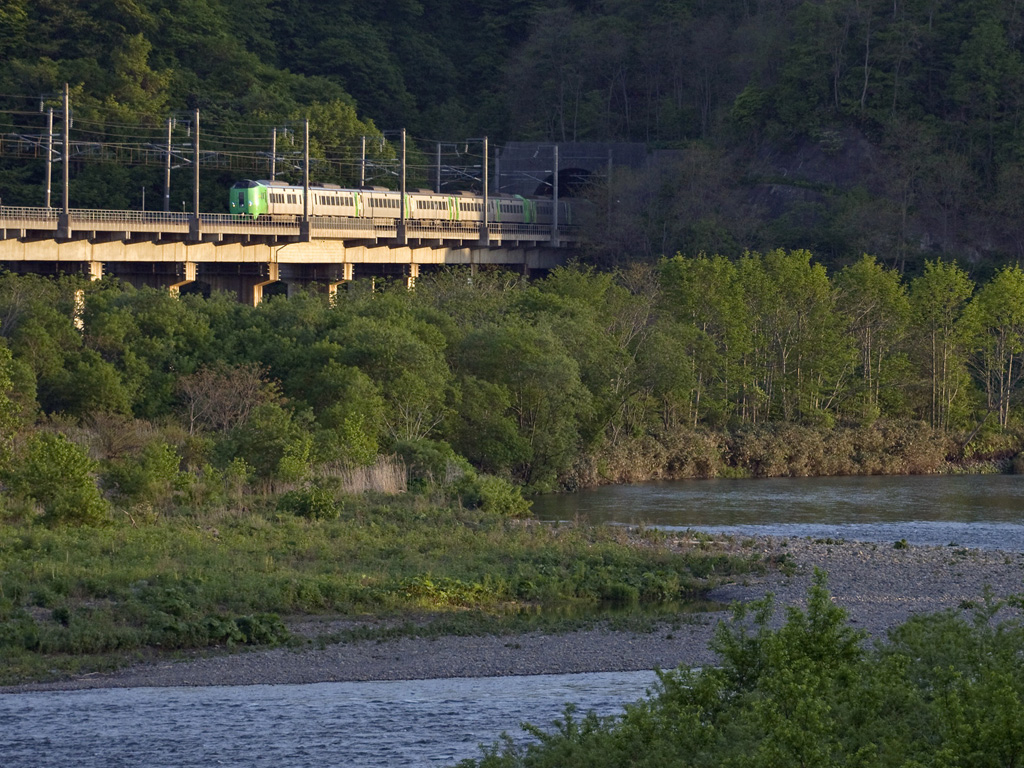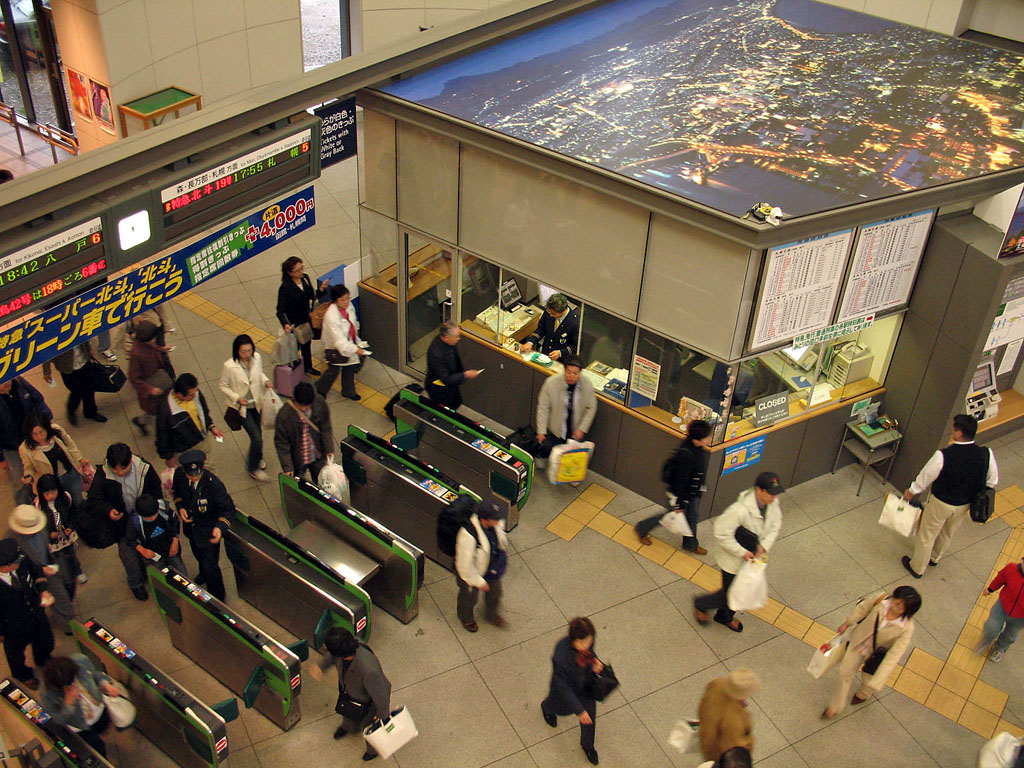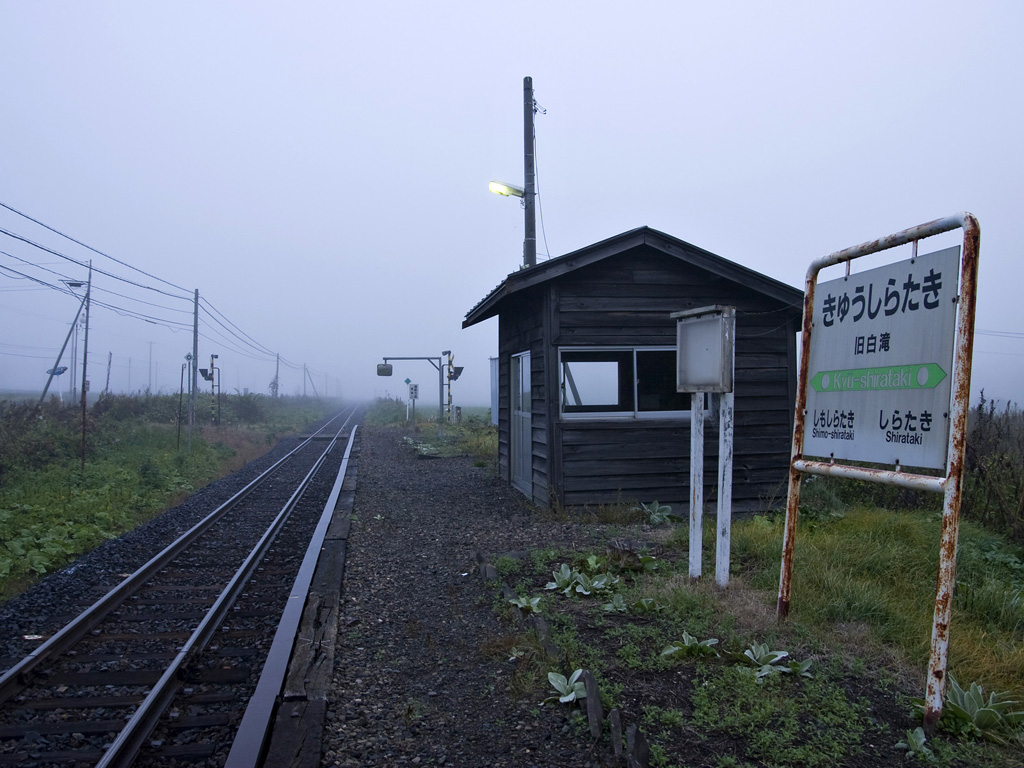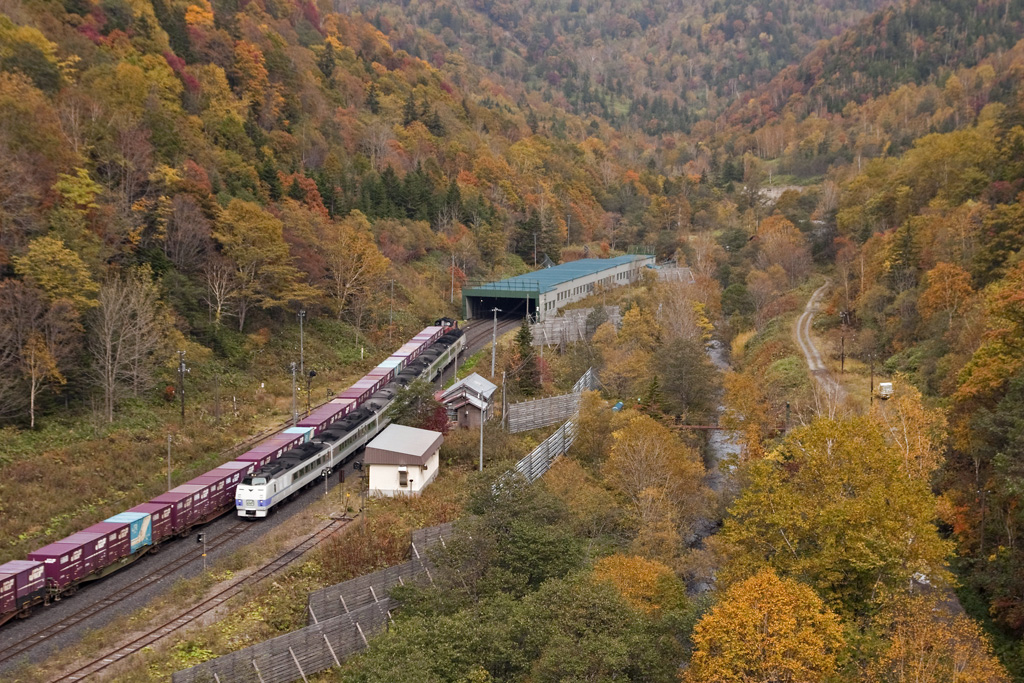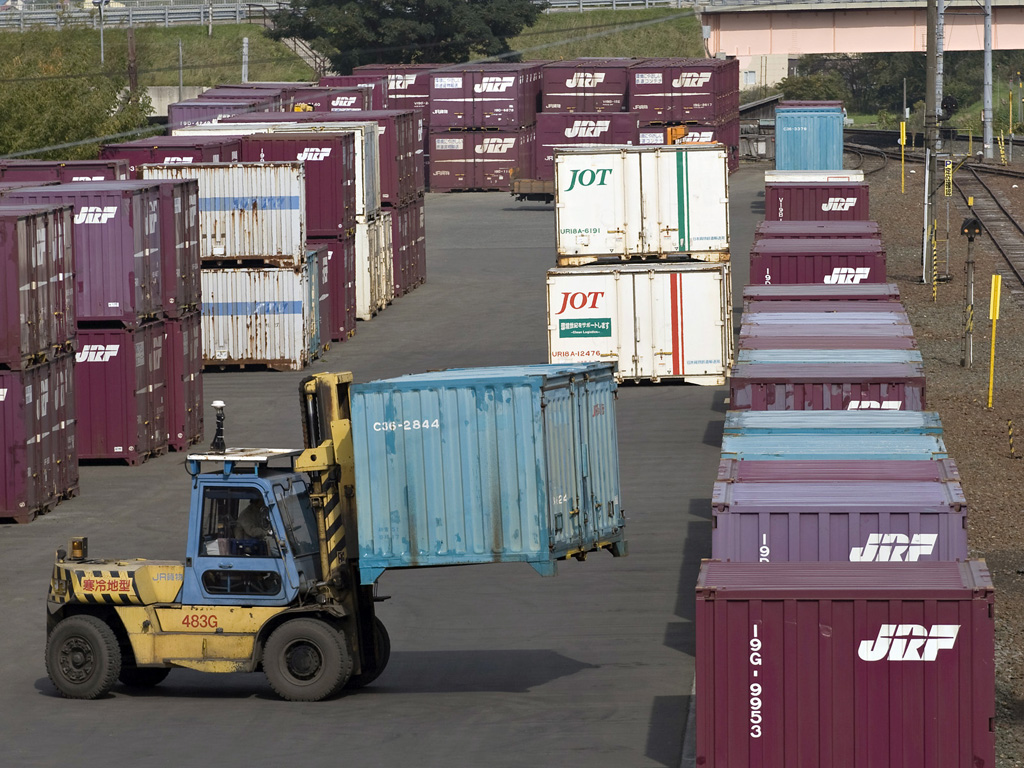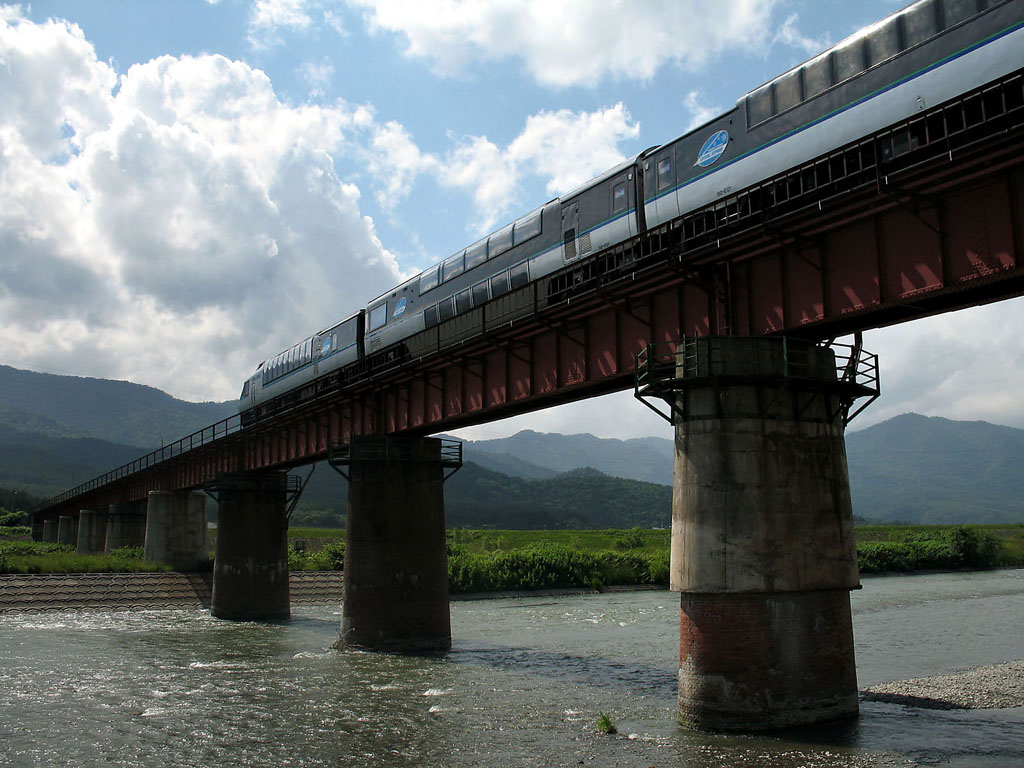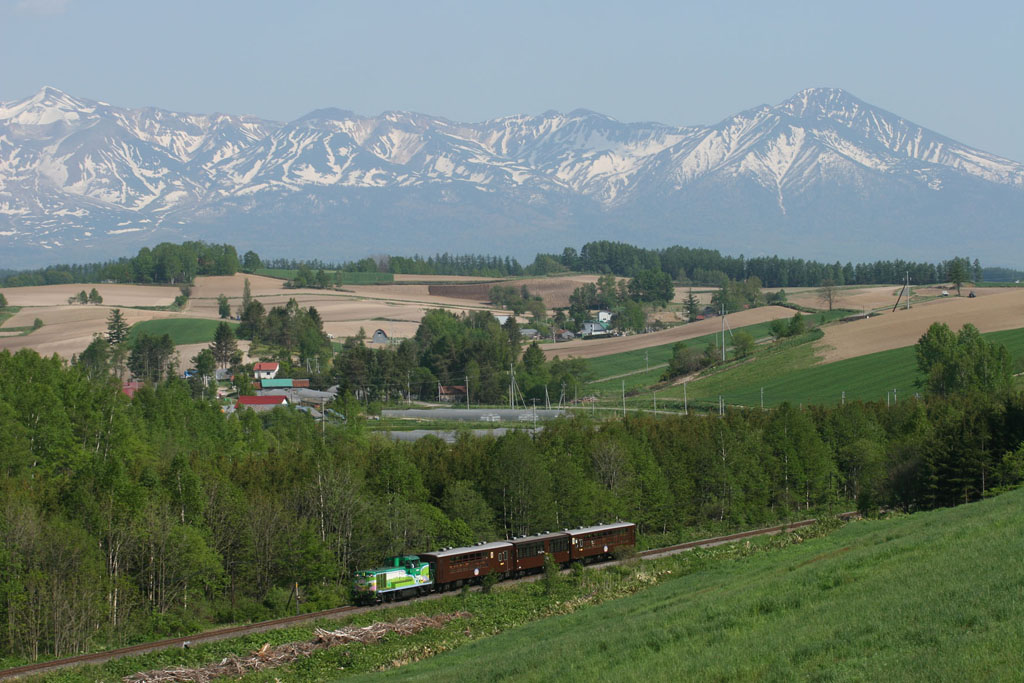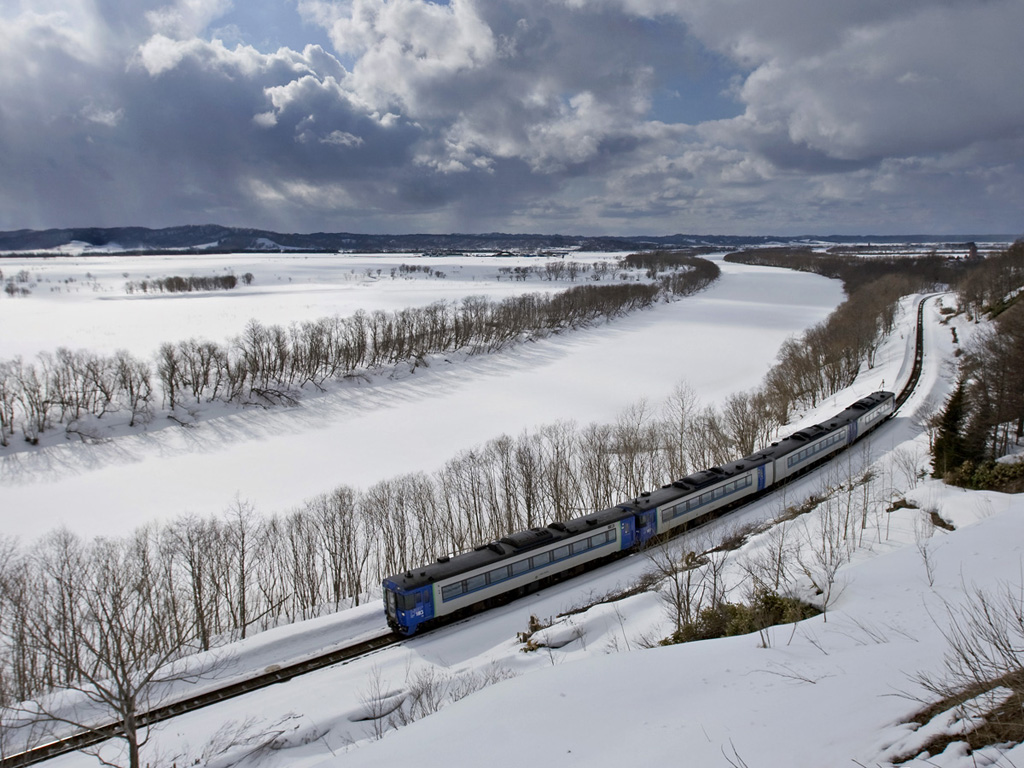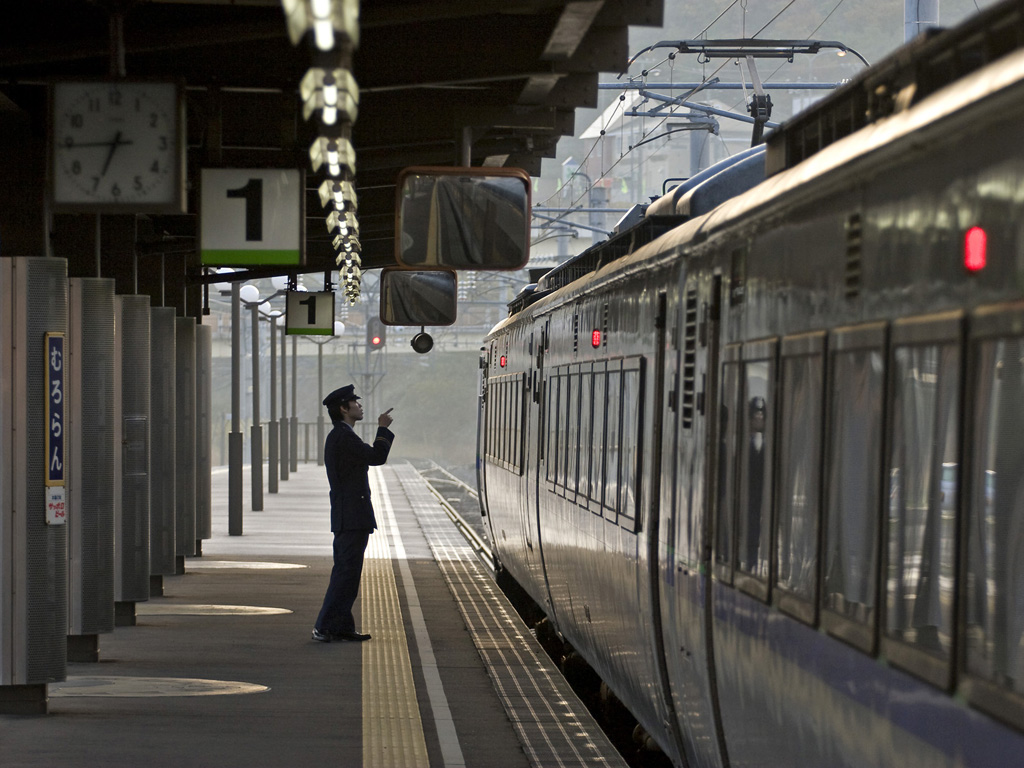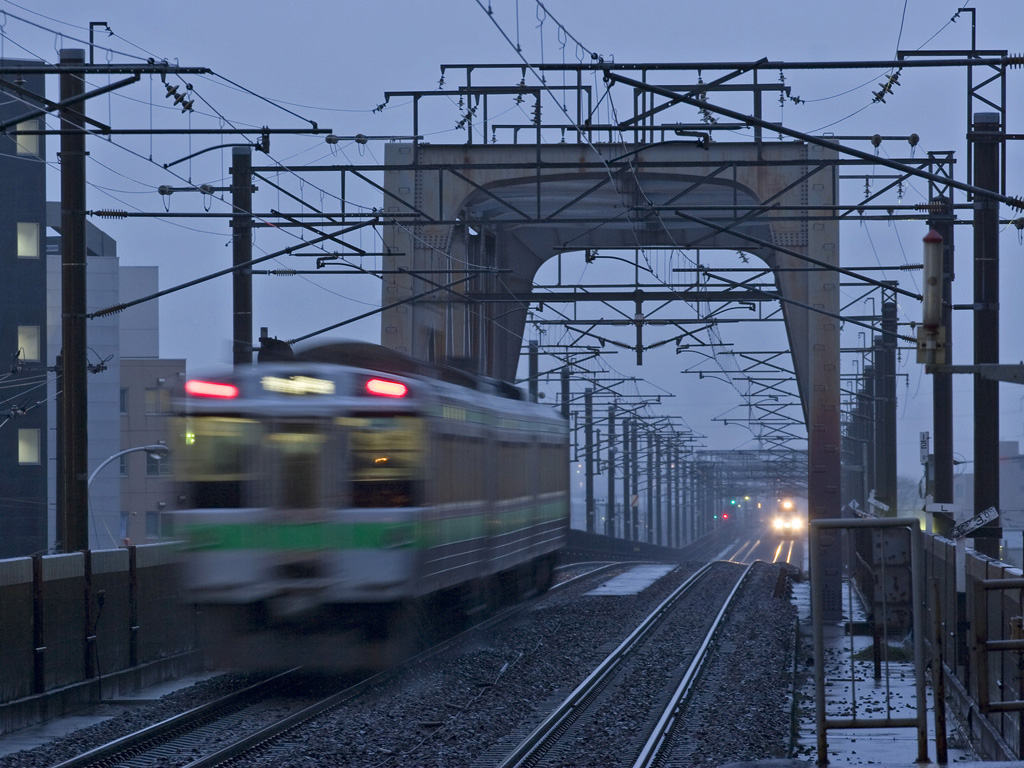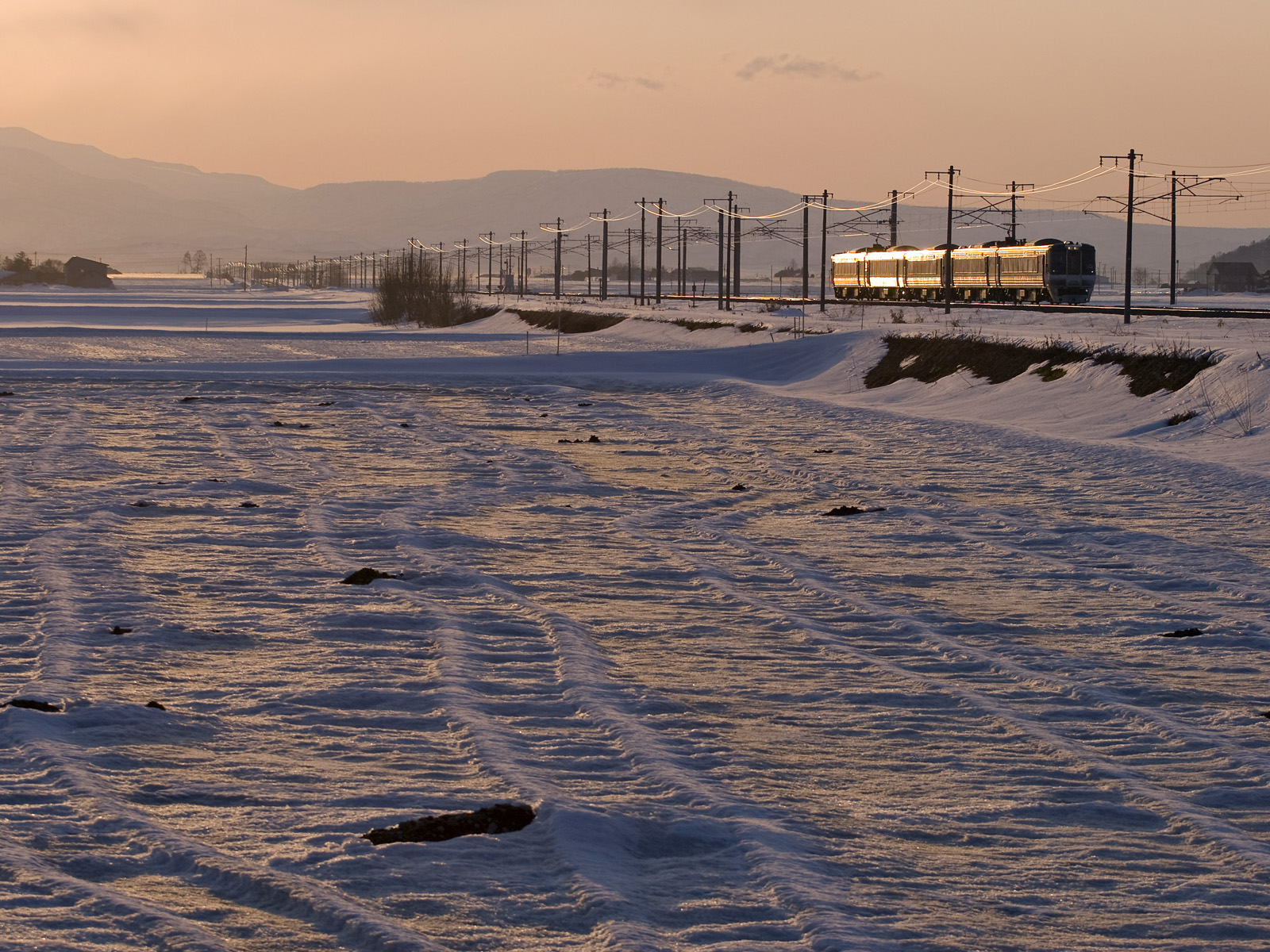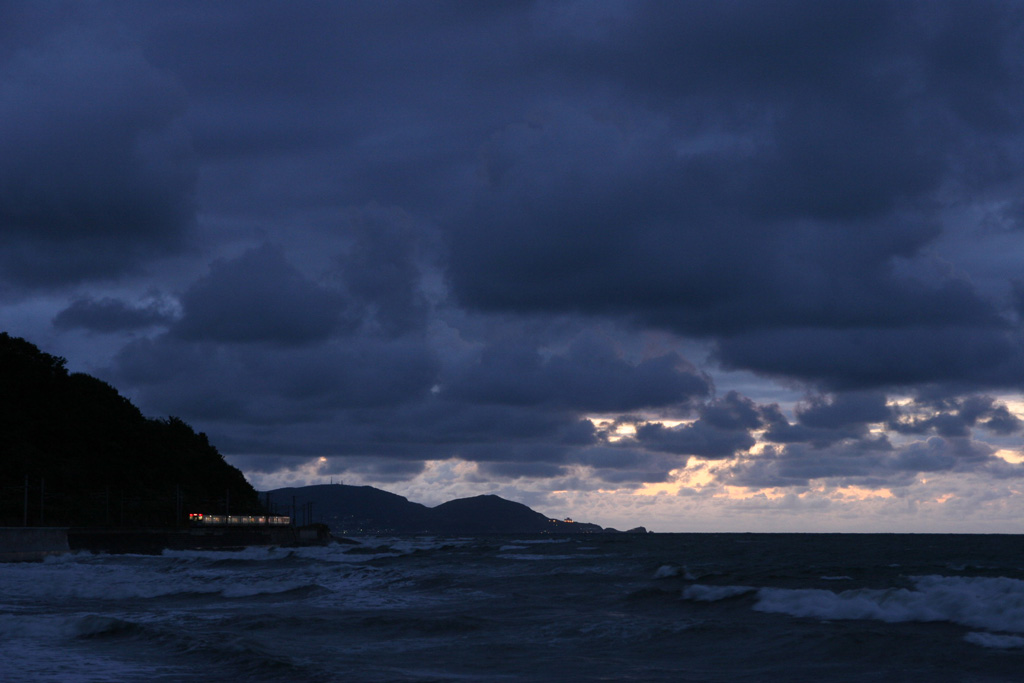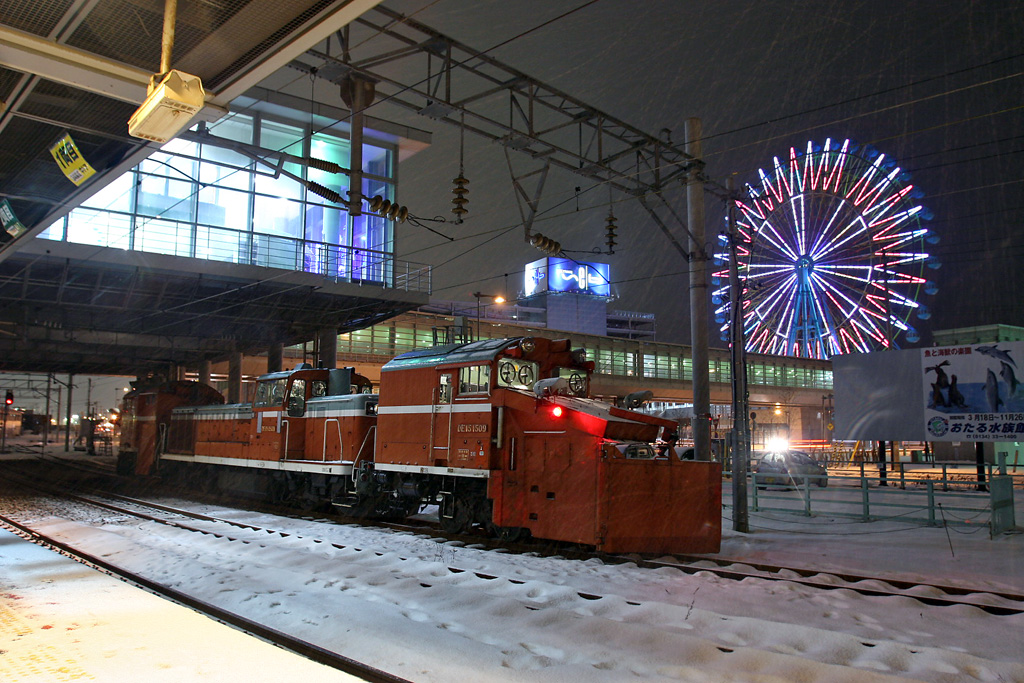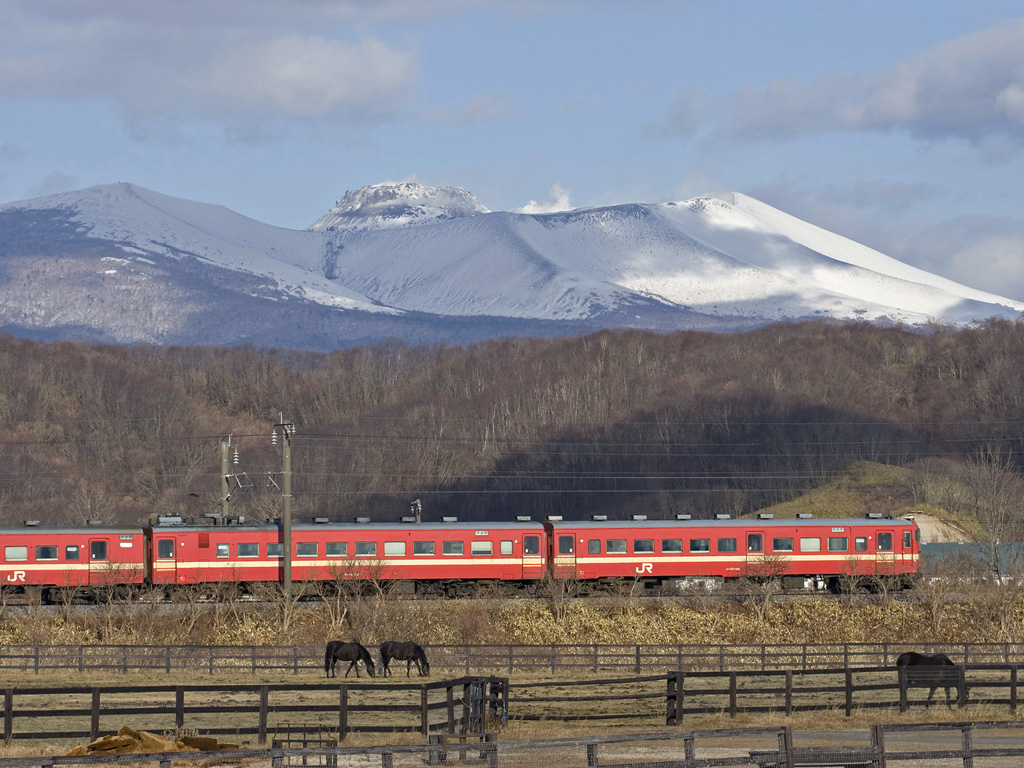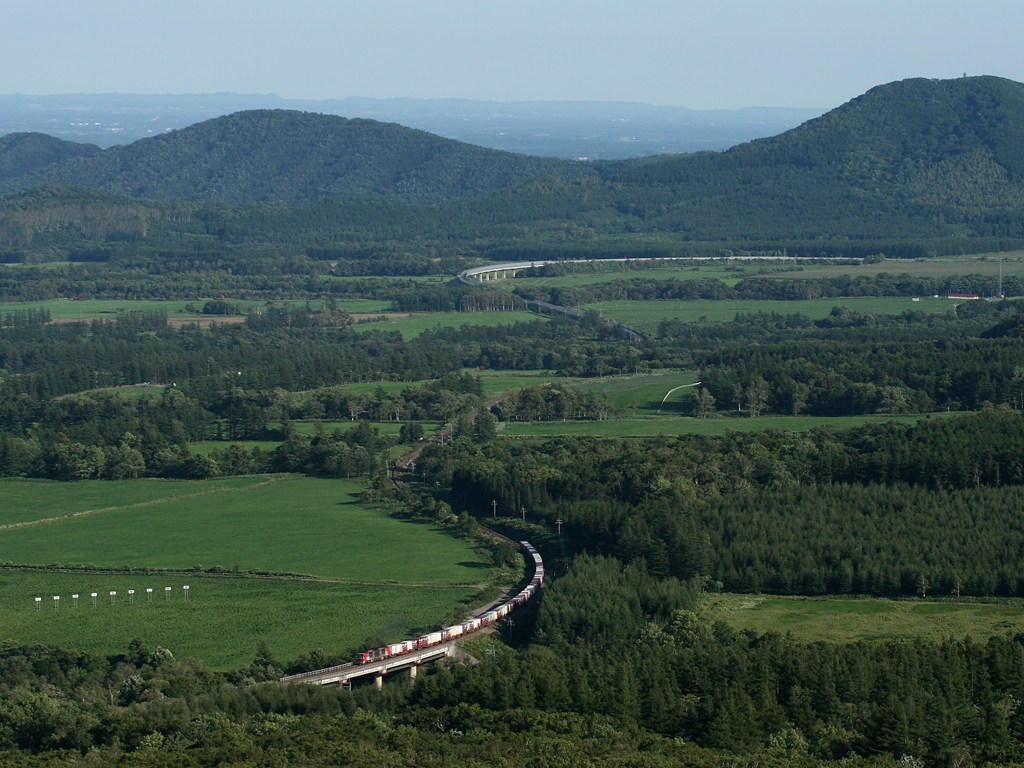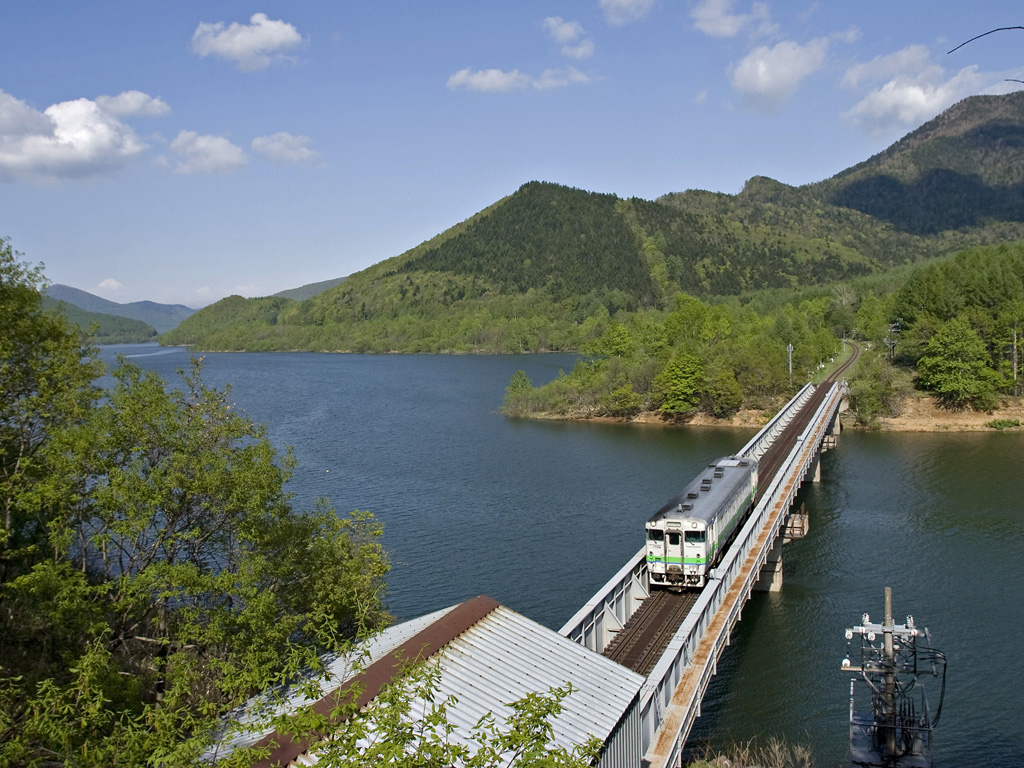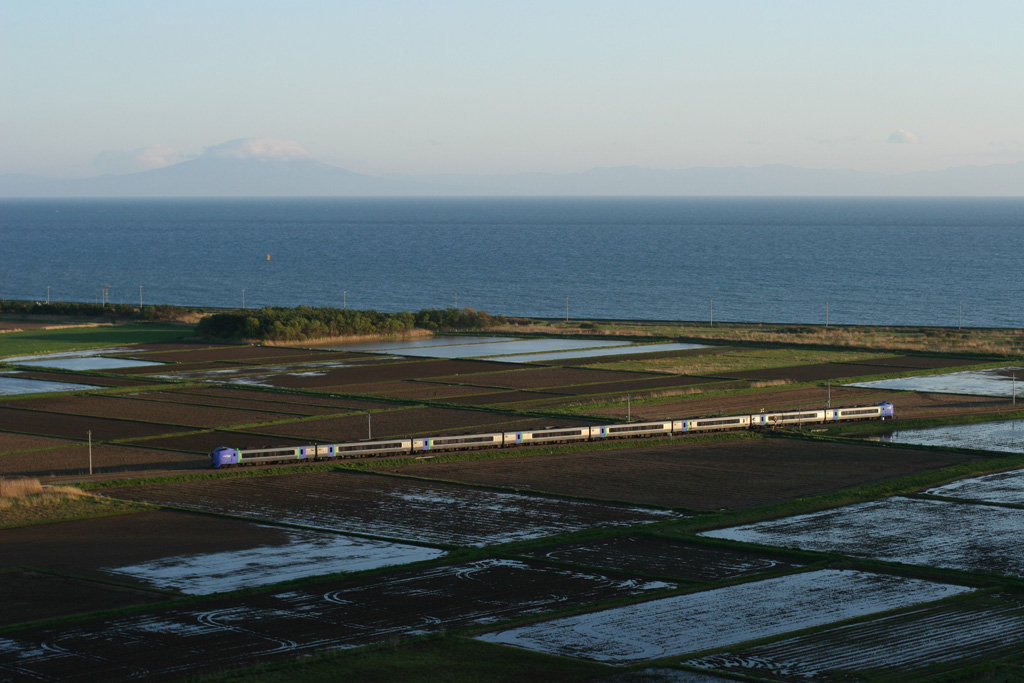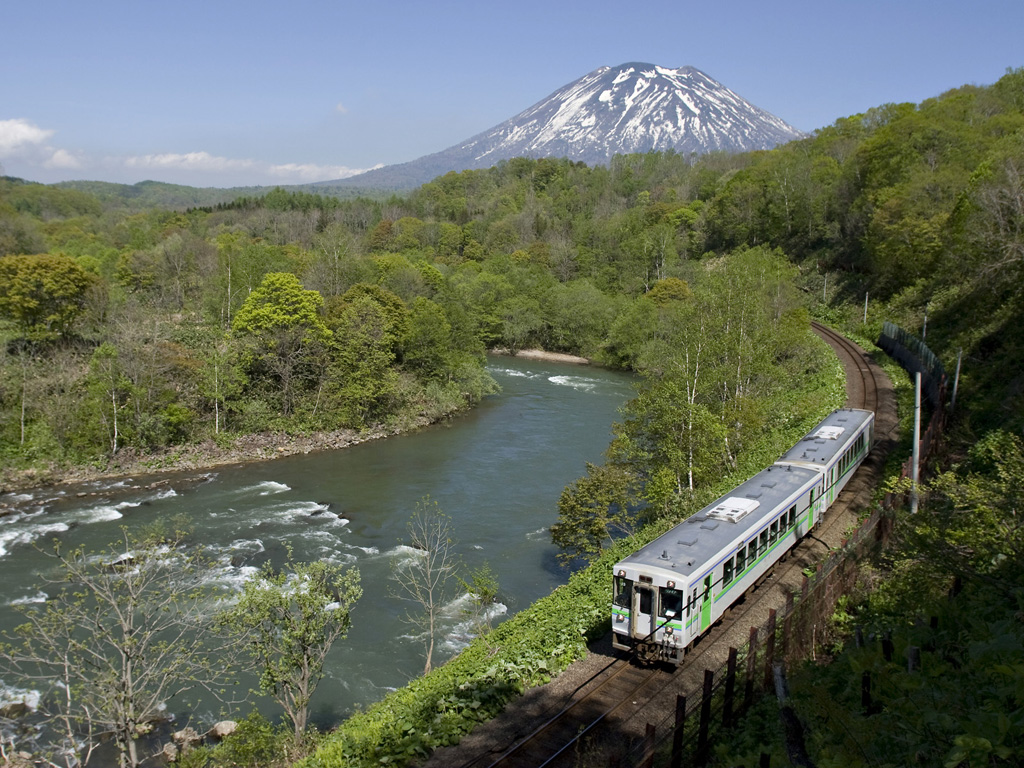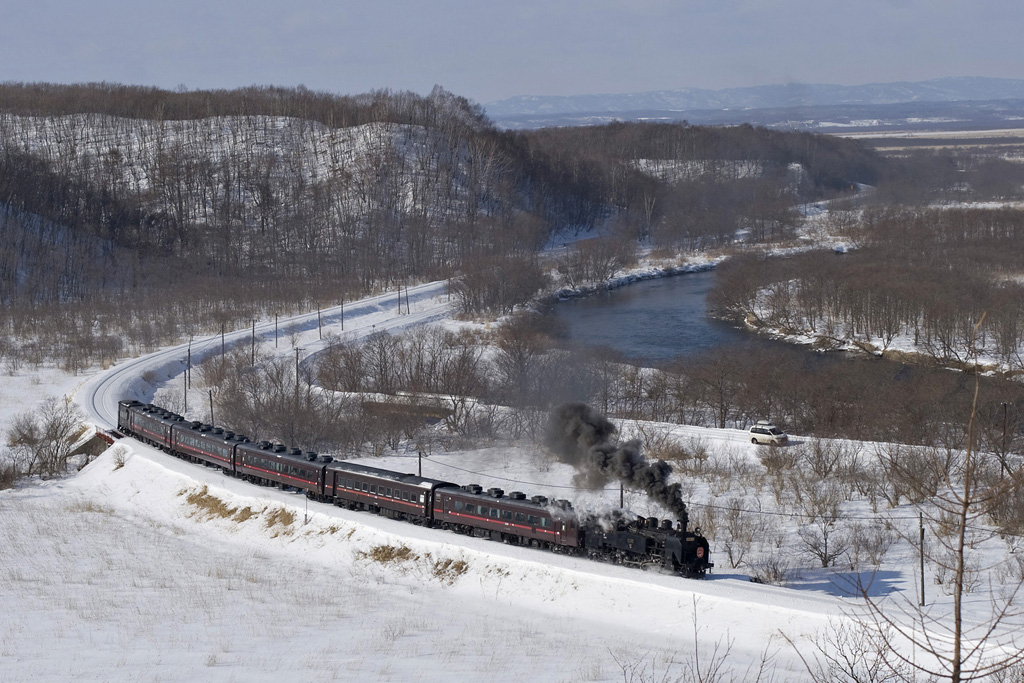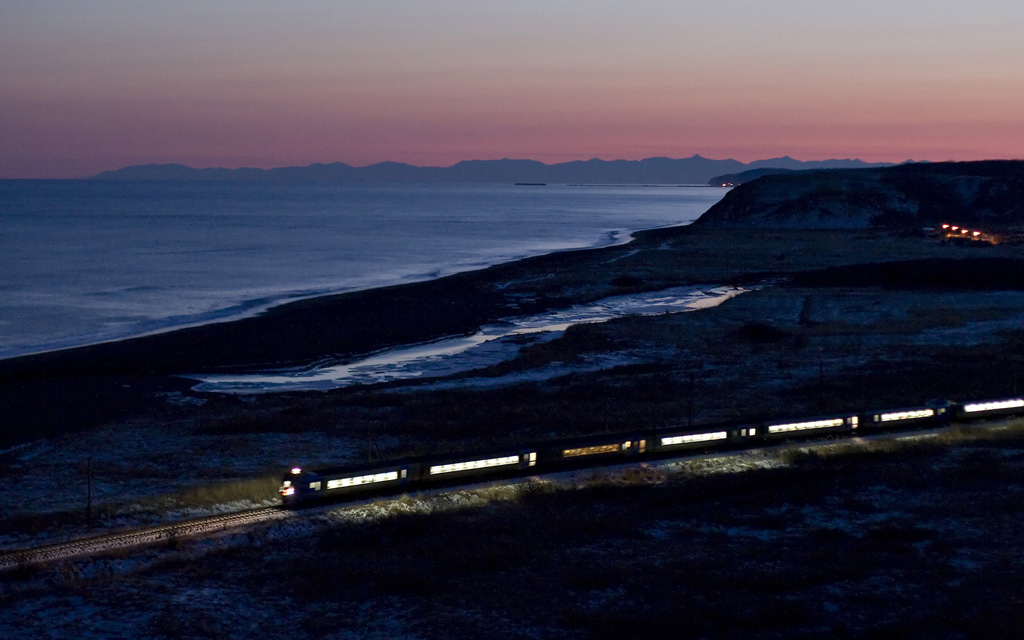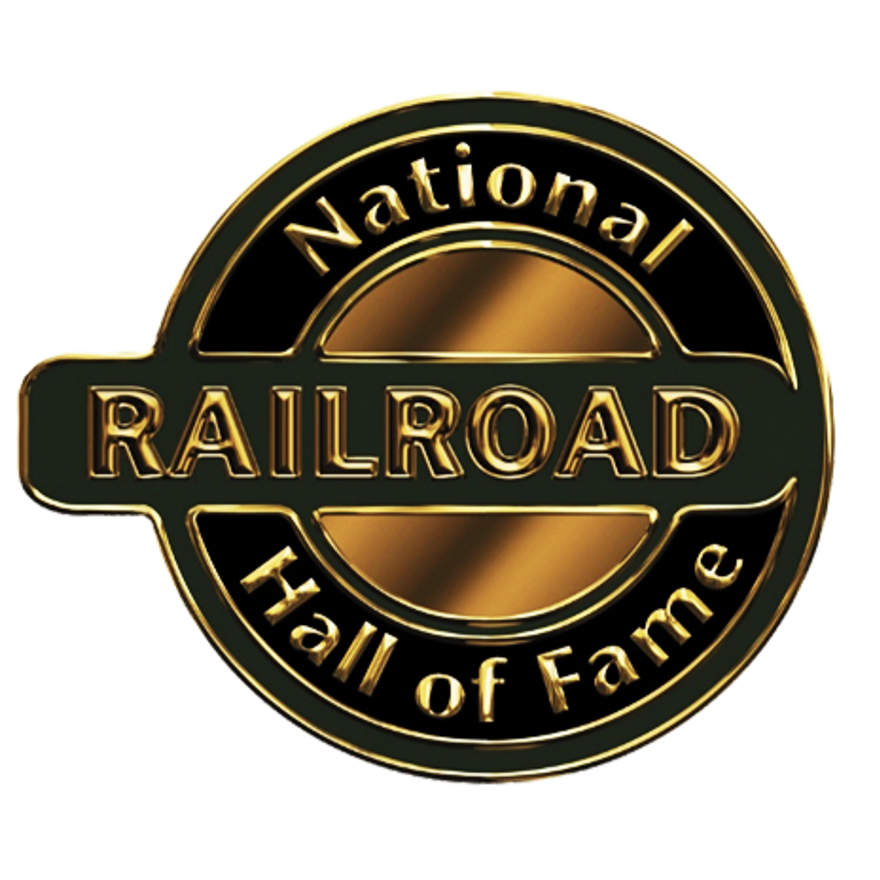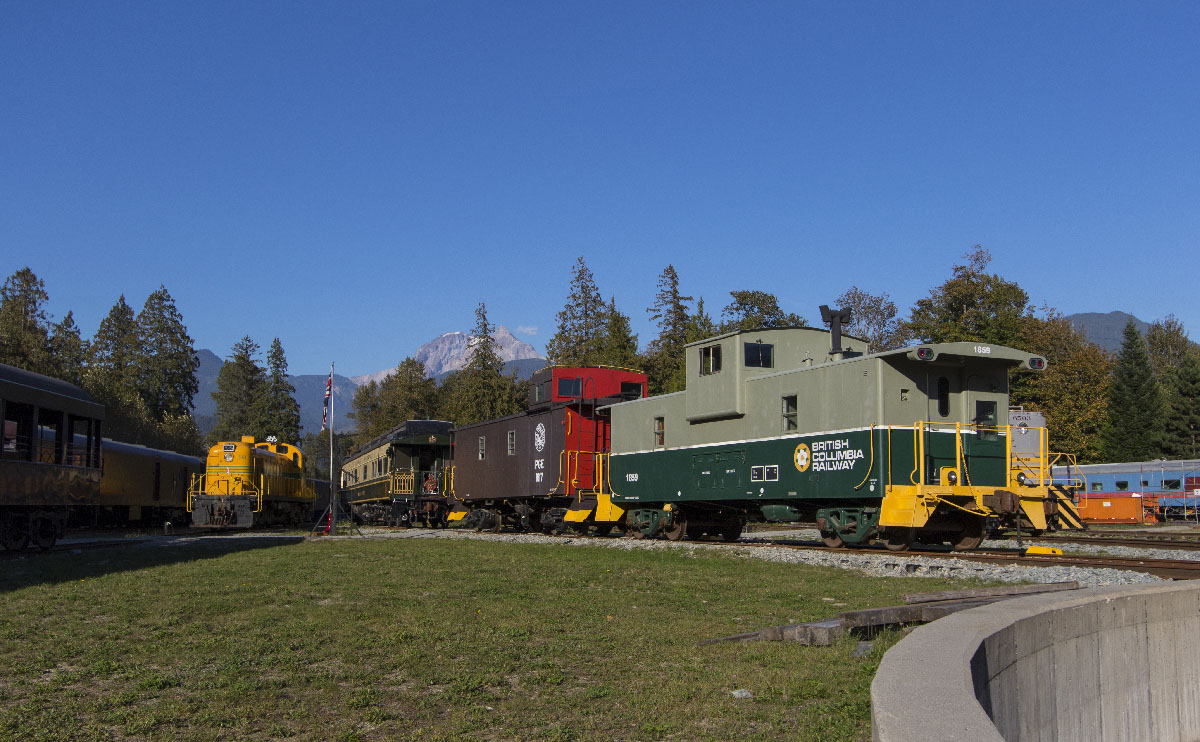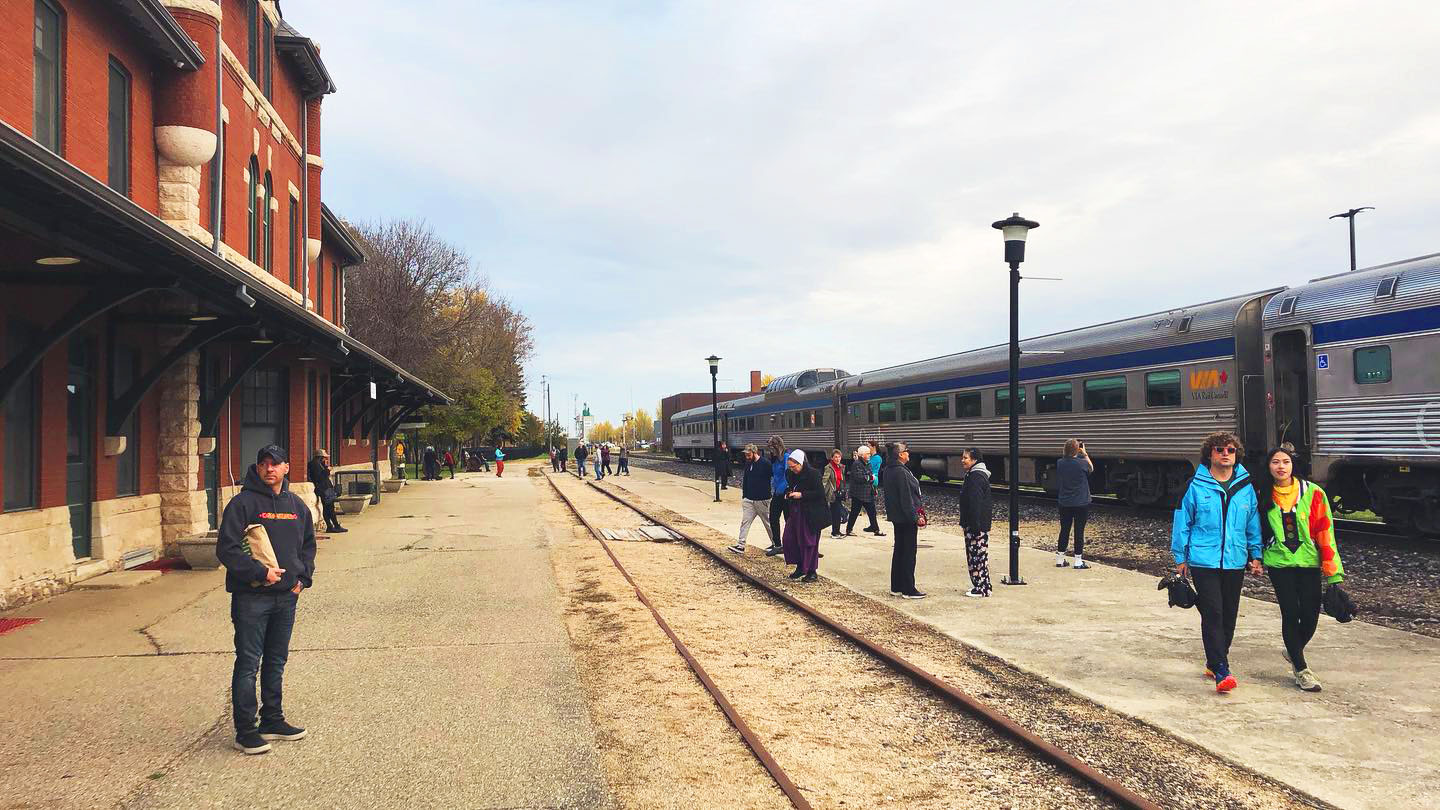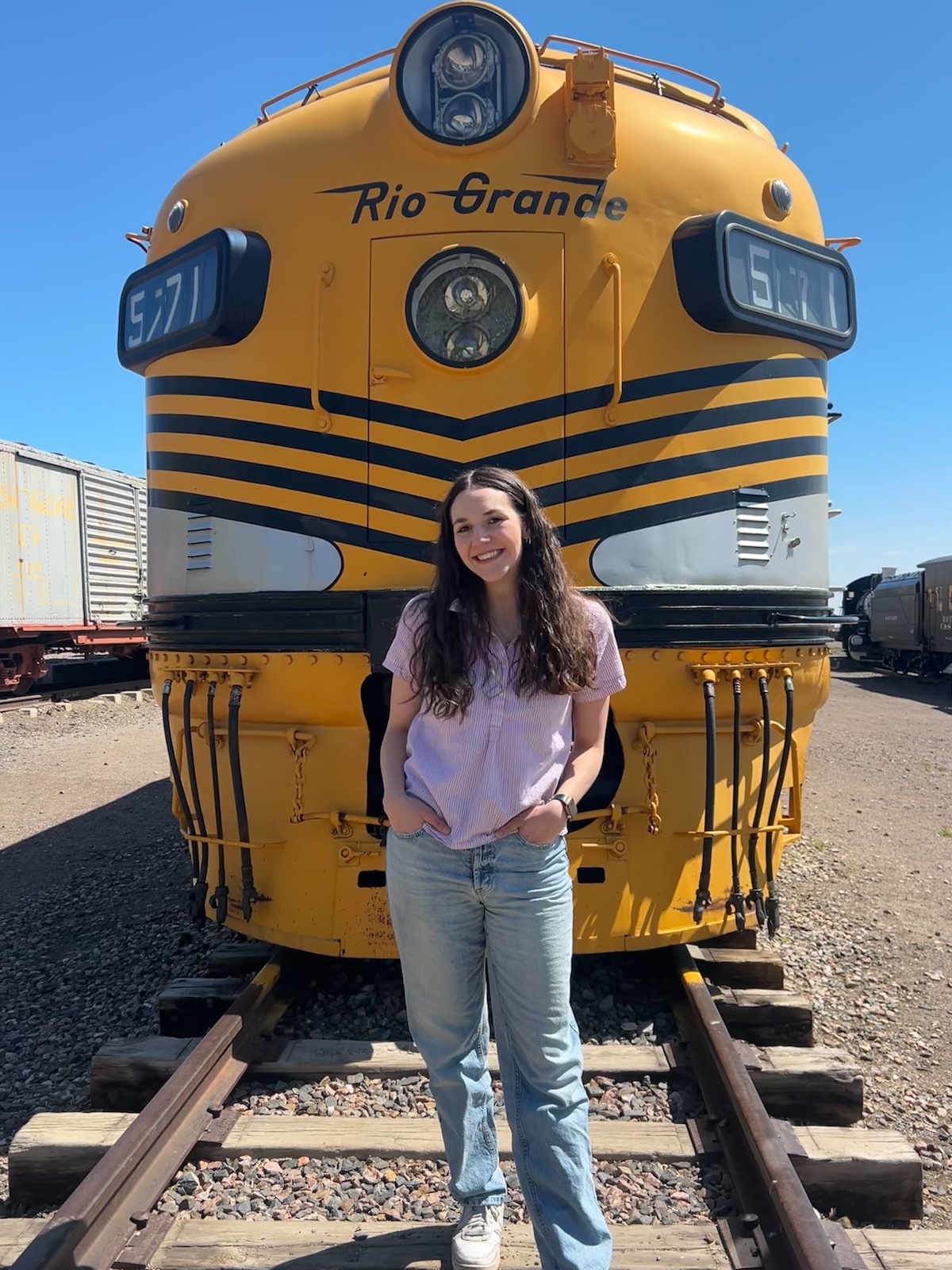Photograph by Scott Lothes
The most luxurious train in Japan, the overnight Cassiopeia from Sapporo to Tokyo, rolls along Volcano Bay behind two specially painted DD51 locomotives just before sunset on June 18, 2007.
Photograph by Scott Lothes
Like locomotive engineers across generations and oceans, the driver of JR Hokkaido’s Hamanasu looks at the ground while starting his DD51 locomotive on Nov. 29, 2006, for the nocturnal run from Sapporo to Hakodate, where an electric locomotive will takeover for the trip through the Seikan Tunnel to Aomori.
Photograph by Scott Lothes
A Super Hokucho limited express with 789-series EMU equipment bursts out of the Seikan Tunnel and into Hokkaido just before sunset on May 28, 2007. By early 2016, standard gauge bullet trains will displace the narrow gauge passenger equipment in the 33.5-mile undersea tunnel.
Photograph by Scott Lothes
Disembarking passengers pass through the automatic ticket gates at Hakodate Station on May 5, 2006.
Photograph by Scott Lothes
The small wooden hut at Kyu-Shirataki on the Sekihoku Line in eastern Hokkaido is typical of rural stations throughout the island.
Photograph by Scott Lothes
At the eastern portal of the 2.5-mile long Sekihoku Tunnel, an Okhotsk limited express with 183-series DMU equipment heads west on the main line while a container freight bound for Kitami holds the siding on Oct. 6, 2006.
Photograph by Scott Lothes
A forklift loads short containers carrying produce onto a seasonal freight train in Furano on Sept. 30, 2006. The one-track container terminal in Furano dispatches two 14-car container trains to Sapporo everyday from late summer through mid-winter.
Photograph by Scott Lothes
Running in Furano Lavender Express service, one of JR Hokkaido’s special sightseer DMU trains crosses the Sorachi River in Furano, heading back to Sapporo on the afternoon of July 15, 2006.
Photograph by Scott Lothes
One of JR Hokkaido’s open-air tourist trains runs through the rolling farmland north of Furano on June 3, 2007. The Daisetsu-zan (Big Snow Mountains) dominate the background.
Photograph by Scott Lothes
The limited express Sarobestsu with 183-series DMU equipment rolls along the frozen Teshio River on the Soya Line in northern Hokkaido on March 21, 2007.
Photograph by Scott Lothes
Demonstrating the practice of “pointing and calling,” a young JR Hokkaido driver prepares to depart Muroran station with a Suzuran limited express for Sapporo on the morning of Nov. 4, 2006.
Photograph by Scott Lothes
A local heads for Sapporo at left while an express approaches on the busy Chitose Line at twilight on April 20, 2006.
Photograph by Scott Lothes
Just before sunset on March 22, 2007, a five-car Super White Arrow limited express (since renamed Super Kamui) with 785-series EMU equipment heads from Sapporo to Asahikawa past the frozen fields in the broad Ishikari Valley.
Photograph by Scott Lothes
At sunset on the stormy evening of Aug. 31, 2006, an Airport Rapid train heads for Otaru along the Sea of Japan just northwest of Sapporo.
Photograph by Scott Lothes
One of JR Hokkaido’s Russell snowplows awaits its next call to service at Otaru-Chikko station in Otaru on Dec. 17, 2006.
Photograph by Scott Lothes
Bright red 711-series EMU equipment running in local service on the Muroran Line passes between horse farms and the volcano Mt. Tarumae on Dec. 20, 2006. Introduced in 1967, many of the still-active 711 cars once served alongside steam locomotives in Hokkaido.
Photograph by Scott Lothes
A Sapporo-bound container freight train ascends Karikachi Pass behind a DF200 diesel locomotive on Aug. 25, 2006. The pass’s lower level of track is visible in the background. This alignment, completed in 1966, broadened the curves and lowered the maximum grade on the pass from 2.5 to 1.2 percent.
Photograph by Scott Lothes
A one-car local passenger train crosses Lake Kaniyama in central Hokkaido on June 1, 2007, on what was once the main line linking Sapporo with the southeast.
Photograph by Scott Lothes
A Super Hokuto limited express runs through rice paddies along Volcano Bay in southwestern Hokkaido just before sunset on May 20, 2007. The volcano Komagatake looms in the hazy distance on the other side of the bay.
Photograph by Scott Lothes
A two-car local train rolls along the Shiribetsu River on May 23, 2007, beneath 6,227-foot Mt. Yotei. Before the Muroran line was completed around Volcano Bay, this was the main line between Sapporo and Hakodate in southwestern Hokkaido, but today it sees only local passenger and seasonal sightseer trains.
Photograph by Scott Lothes
One of JR Hokkaido’s two restored C11 2-6-4T steam locomotives rolls through the scenic Kushiro Marsh in far southeastern Hokkaido on Feb. 3, 2006.
Photograph by Scott Lothes
At twilight on Feb. 2, 2007, a Super Ozora limited express with 283-series DMU equipment bound for Kushiro sprints along the Pacific Ocean.





